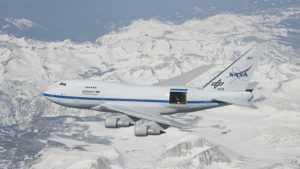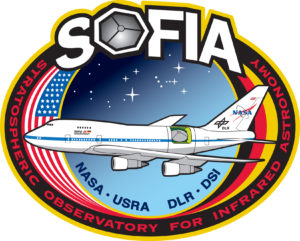 A few weeks back I travelled with a NASA sponsored team to Idaho to launch high altitude balloons during the recent total eclipse. We sent up various cameras, data recorders and more (even an Idaho potato) to record data and media at high altitude during totality (being up above any possible weather or smoke is an added bonus). We travelled to Idaho from Reno and Las Vegas because that was where totality would occur. We only would have experienced a partial eclipse if we’d stayed home and would have missed out on important data you can only record during totality. Since then we have shared almost all the data and media we recorded and will continue to do so.
A few weeks back I travelled with a NASA sponsored team to Idaho to launch high altitude balloons during the recent total eclipse. We sent up various cameras, data recorders and more (even an Idaho potato) to record data and media at high altitude during totality (being up above any possible weather or smoke is an added bonus). We travelled to Idaho from Reno and Las Vegas because that was where totality would occur. We only would have experienced a partial eclipse if we’d stayed home and would have missed out on important data you can only record during totality. Since then we have shared almost all the data and media we recorded and will continue to do so.
Partly because of that experience (and other NASA projects I’ve been allowed to be part of), my experience with the RECON project and because my job requires me to have a social media presence and share resources and experiences via those connections, NASA recruited me to take a flight on SOFIA (Stratospheric Observatory For Infrared Astronomy). My flight is scheduled for September 25th – here’s the observation plan for that night. Needless to say I’m thrilled and honored to have this opportunity!
I’ve been told we will takeoff about 7:00 PM and not land until 5:00 AM the next morning, so 10 hours in air.
SOFIA’s infrared telescope weighs in at 19 tons (38,000 pounds) and was built in Germany.
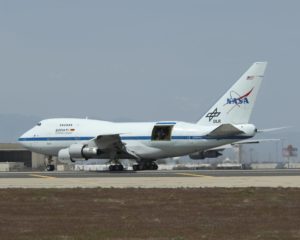
SOFIA is a modified Boeing 747SP. Note the large door in it’s side that when open exposes a 2.5 meter (100 inch) wide reflecting infrared telescope to the sky.
So why put a telescope in a 747 and fly all night recording data? Seems expensive for something you can do on the ground from much larger telescopes.
SOFIA generally flies between 12,000 and 13,000 meters (39,000 and 43,000 feet), and that is important. It’s important because at those altitudes you are above most of the Earth’s atmosphere and humidity. The “Twinkling” of the stars in the sky experienced from the ground is caused by the starlight traveling through the atmosphere’s humidity and variations in temperature. You are also above clouds, most air pollution and other factors (like bad weather) that limit grounded telescopes from obtaining a clear view (also why the Hubble space telescope gets such awesome observations even though it is much smaller that many ground based telescopes on Earth).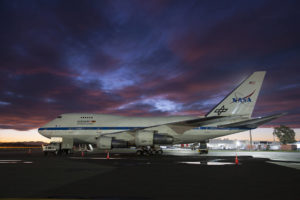
A huge advantage SOFIA has over ground based telescopes is that it can go where the action is – like when it travelled to New Zealand to capture Pluto’s occultation of a star. 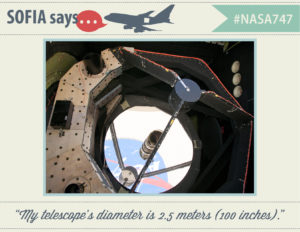
ANNNND it will travel to the US east coast on October 5th to Chase Triton’s Shadow over the Atlantic Ocean.
From SOFIA’s media outlet: “As Neptune’s moon Triton passes in front of a distant star, it will cast a faint shadow on Earth’s surface. The team of researchers will carefully map the path of that shadow and then fly into it to study Triton’s atmosphere, directly, for the first time in 15 years. SOFIA will takeoff from Florida to catch the shadow that will fall over the Atlantic Ocean. The shadow is moving; the plane is moving; and the predicted path may change in flight, making catching the shadow very challenging. Researchers are trying to determine if Triton’s atmosphere is expanding or collapsing and if haze last seen by the Voyager mission is still present.” triton-final[1][1][1] (link to flyer)
I won’t be on the flight chasing Triton’s shadow (it happens over a week later than mine), but that gives me the opportunity to pass on what I learn about SOFIA in preparation for the October 5th flight. I will be presenting about Chasing Triton’s Shadow and SOFIA locally in Reno and I’m available to visit local schools and even video-conference in pretty much anywhere.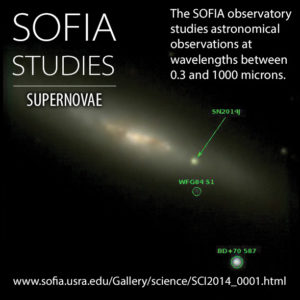
I’ll be adding more posts about SOFIA soon and you can follow me on Twitter @bcrosby. I’ll be uploading photos to FLICKR as well, I’ll post the link when I post photos.
Learning is messy!

